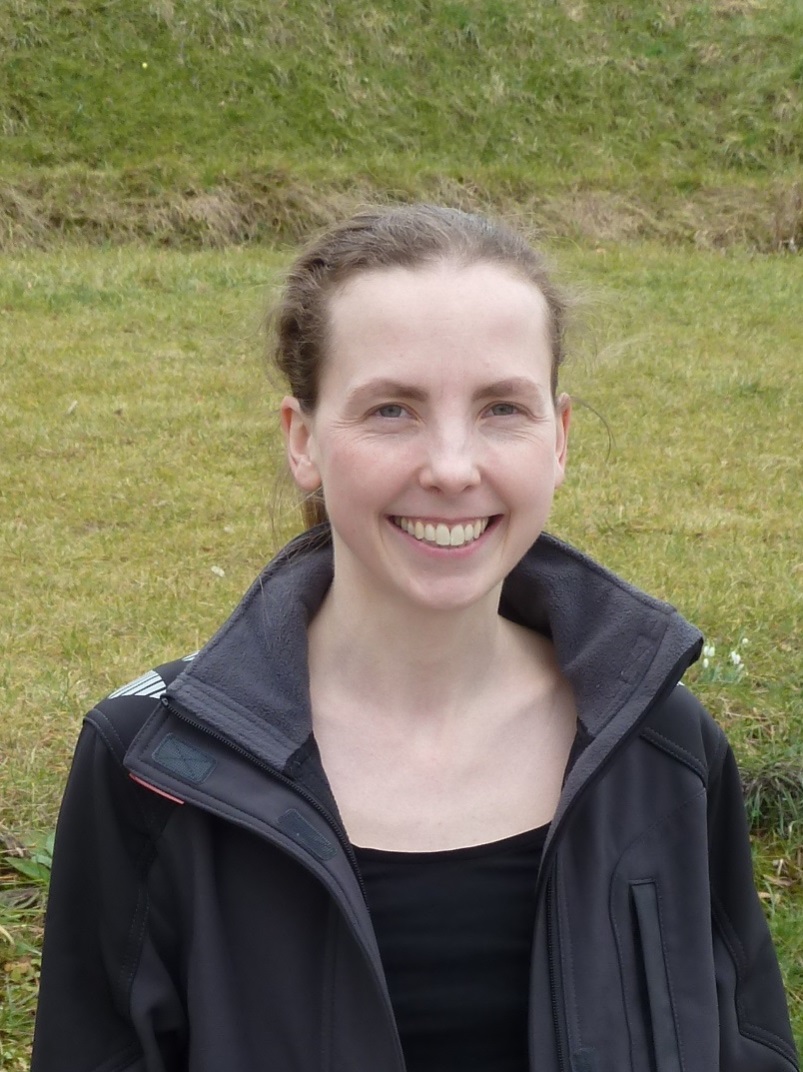
WiDS Chemnitz 2023
May 4th - 5th, 2023
"On May 4th and 5th the regional WiDS Chemnitz event took place for the second time. It was entirely held in-person and attracted 60 data scientists, students and professionals from industry across several disciplines. WiDS Chemnitz was a conference full of highlights including 6 plenary talks by fantastic speakers working in data science with applications in medicine, sociology, agriculture, autonomous driving, climate impact research and pricing. The plenary talks resulted in lively discussions what laid the foundation for exciting networking sessions. The WiDS Chemnitz ambassadors Franziska Nestler and Theresa Wagner are thankful for everyone who participated in the career panel and opened up about their experiences during their career. They are sure that many of the attendees will benefit from the tips and lessons learned the panelists shared with the audience. Moreover, they were excited about many poster contributors this year what gave everybody the chance to learn about their interesting research. The WiDS Chemnitz conference dinner provided the perfect opportunity to deepen the conversations. As last year, networking was super easy and the exchange went great and was very successful. Franziska and Theresa are very grateful to their colleagues at TU Chemnitz and the WiDS Community for the great support. WiDS Chemnitz 2023 was certainly a big success and they cannot wait for next year."
Program
Thursday, May 4th 2023
| 12:00 - 13:00 | Registration |
| 13:00 - 13:15 | Opening |
| 13:15 - 14:00 |
Plenary Talk: Theresa Züger "How AI can serve the public interest" |
| 14:00 - 14:45 |
Plenary Talk: Myra Spiliopoulou "Data Science for Treatment Outcome Prediction" |
| 14:45 - 15:30 | Coffee Break |
| 15:30 - 16:15 |
Plenary Talk: Sina Brunsch "Automotive Applications: Labeling and Localization" |
| 16:15 - 17:00 |
Career Panel Panelists: Kathrin Hatz, Myra Spiliopoulou |
| 18:30 |
Conference Dinner at Miramar |
Friday, May 5th 2023
| 09:00 - 09:45 |
Plenary Talk: Anastasiia Platovskikh "Algorithms behind Dynamic Pricing" |
| 09:45 - 10:30 |
Plenary Talk: Kathrin Hatz "How AI changes Agriculture" |
| 10:30 - 11:00 |
Coffee Break |
| 11:00 - 12:00 | Poster Session |
| 12:00 - 12:45 |
Plenary Talk: Annika Stechemesser "Data-based analysis of social and economic climate impacts" |
| 12:45 - 13:00 | Closing |
Featured Speakers
 |
|
(Alexander von Humboldt Institute for Internet und Society) |
| "How AI can serve the public interest" |
| This presentation will delve into the potential for AI to serve the public good, exploring the meaning of this term and its implications for the development of technology. Using real-world examples, Theresa Züger will illustrate the nature of projects in this field and introduce publicinterest.ai, an initiative focused on improving the data infrastructure for common good-oriented AI projects. The talk will focus on the theoretical and practical aspects of AI for the common good. |
 |
|
(Bayer, R&D Crop Science) |
| "How AI changes Agriculture" |
| With all the changes happening in the world - from climate to geopolitics - the responsibility of Agriculture to help shaping a positive future for all of us is increasing more and more. In the last decade, a significant shift is visible in the way research is done in this area: all of a sudden AI and Data Science were entering the field. I will provide an overview of key challenges and the development of AI in Agriculture including a couple of examples that illustrate the ultimate impact. |
|
(Potsdam-Institut für Klimafolgenforschung) |
| "Data-based analysis of social and economic climate impacts" |
| Climate change remains one of the greatest challenges of the 21st century. In this talk, we explore how data-analytic methods from statistics, econometrics and machine learning can be used to identify economic and societal impacts of climate change. In particular, we dive into some examples, such as analyzing the connection between temperature and hate speech online. |
 |
|
(Intenta Automotive GmbH) |
| "Automotive Applications: Labeling and Localization" |
| We present two applications of data science in the field of software development for advanced driver assistance systems (ADAS).In the first part, we learn how neuronal networks can support ground truth labeling processes. In this particular setting, a circular convolutional neural network (CCNN) is used.In the second part, we shortly introduce sensor data fusion for vehicle localization and give examples of mathematical concepts employed therein. |
 |
|
(Otto-von-Guericke-University Magdeburg) |
| "Data Science for Treatment Outcome Prediction" |
| When a patient comes to a clinic, s/he undergoes a set of diagnostic tests, at the end of which there is a diagnosis and a treatment plan. Of course, the expectation is that the treatment will be successful. But how to know this in advance? For some diseases, scientists have found that some people respond well and others do not; which are the characteristics of those that do (not) respond well? In this talk, we will first see the notion of ‘treatment outcome’. The outcome can be binary (e.g. response=YES/NO) but it is typically a score or a difference between the score before treatment and after treatment. Despite the fact that we want to ‘predict’ the outcome, the learning task is not a prediction over a time series, since we have only two timepoints – the timepoint of the treatment assignment and the timepoint of the after-treatment visit. If the treatment outcome is a dichotomous variable, then the ‘prediction’ is a classification task. If it is a numeric variable, then it is a regression task. A major challenge for both tasks is that we have a large feature space and many missing values, because not all patients undergo all tests. We will see learning methods for doing the prediction despite the missing data problems, including a method that exploits the missingness for learning. Finally, we will say ways of identifying clusters of patients that contribute to outcome prediction. These clusters describe patients that respond well (less well) to treatment and can thus be used for treatment planing. |
 |
|
(GK Artificial Intelligence for Retail AG) |
| "Algorithms behind Dynamic Pricing" |
| Nowadays, more and more retailers want to set prices dynamically, considering numerous factors such as price elasticity, competitor prices, production costs, or even weather. That makes Dynamic Pricing a constantly evolving field of application for artificial intelligence. Various algorithms are applied to predict the demand and, based on it, calculate an optimal price instantly. In my presentation, I will talk about algorithms that stand behind Dynamic Pricing and demonstrate by examples how impactful they can be. |
Career Panel
 |
 |
|
(Bayer) |
(Otto-von-Guericke-Universität Magdeburg) |
Poster Sessions
Laura Paul(RWTH Aachen) |
| "Covariance Estimation for Massive MIMO systems" |
| Massive multiple-input multiple-output (MIMO) communication systems are very promising for wireless communication and fifth generation (5G) cellular networks. In massive MIMO, a large number of antennas are employed at the base station (BS), which provides a high degree of spatial freedom and enables the BS to simultaneously communicate with multiple user terminals. Due to the limited angular spread, the user channel vectors lie on low-dimensional subspaces. For each user, we aim to find a low-dimensional beamforming subspace that captures a large amount of the power of its channel vectors. We address this signal subspace estimation problem by finding a good estimator of the signal covariance matrix in terms of a truncated version of the nuclear norm based on the received data samples at the BS. We derive improved bounds on the estimation error in terms of the number of observed time samples, the number of sampled entries (antennas), and the truncation level. |
Melanie Kircheis(TU Chemnitz) |
| "Efficient inversion of the multivariate nonequispaced fast Fourier transform" |
|
The well-known discrete Fourier transform (DFT) can easily be generalized to arbitrary nodes in the spatial domain.The fast procedure for this generalization is referred to as nonequispaced fast Fourier transform (NFFT). Various applications such as MRI, solution of PDEs, etc. are interested in the inverse problem, i.e., computing Fourier coefficients from given nonequispaced data.In contrast to iterative solvers we study direct methods for this inversion in the overdetermined setting.For this purpose, we use the matrix representation of the NFFT and introduce a new method using least-squares minimization.Modifying one of the matrix factors of the NFFT leads to an optimization problem, which can simply be solved in a precomputational step.Thereby, we are able to compute an inverse NFFT up to a certain accuracy by means of a modified adjoint NFFT, which preserves its arithmetic complexity. |
Vira Raichenko(University of Potsdam) |
| "Topological Data Analysis in Material Science" |
| A silkworm weaves the incredibly interesting and intricate structure of the cocoon which can be a great inspiration for bio-materials. It spins the cocoon out of one long double silk fiber and then uses it as a shelter for the transformation from a caterpillar to a moth. The strong and tough stucrture on the cocoon relies on the robust inter-fiber bonding. Therefore, we are interested in developing a framework for understanding the cocoon fiber network through geometrical and topological methods and developing it further for fibrous and entangled materials. |
Laura Lippert(TU Chemnitz) |
| "Object weights can be predicted from movement kinematics in a replacement task" |
|
When grasping and replacing an object, grasp pattern, grip and load force are adjusted using an internal forward model (Hermsdörfer et al., 2011). More accurate predictions of object properties (e.g. weight) allow more precise forward control (e.g. anticipatory grip force scaling). When receiving an object in a handover precise forward models are important for a smooth tranfer. Observation of the giver's kinematics when transporting the object may transmit information (e.g. weight) and therefore may be used for the formation of forward models on the receiver side. Machine learning (ML) allows the systemetic extraction of specific kinematic patterns of a movement (Balaji et al., 2020). Therefore, ML is a suitable tool to investigate how different object properties change movement patterns as a function of varying object properties. The aim of our study was to investigate wether the object weight in an object replacement task can be classified by time-profiles of joint angles using a discrete cosine transform for data reduction and a support vector machine (SVM) for classification. |
Marie Zech(University of Leipzig) |
| "Nonlinear autoregressive exogenous modeling to predict individual hematotoxicity during chemotherapy" |
|
Cytotoxic cancer therapies frequently result in severe hematotoxic side-effects. Predicting a patient’s hematologic response to treatment is of high clinical relevance but is difficult due to high between-patient heterogeneity. While several (semi-)mechanistic models of bone marrow hematopoiesis have been developed to solve this task, the established models could not sufficiently describe certain patients exhibiting chaotic dynamics. To address this challenge, we propose a data-driven machine learning approach, using recurrent neural networks based on non-linear autoregressive exogenous (NARX) models. We implement a transfer learning approach and employ several model reduction techniques to cope sparsity of individual patient data. The framework is evaluated on a virtual patient population generated with a semi-mechanistic models of hematopoiesis, resulting in a personalized prediction model for each virtual patient. The results show good generalization performance for all individual models, while maintaining parsimonious networks. This indicates, that our transfer approach using NARX networks can provide robust prediction of an individual patient’s response to treatment, demonstrating an alternative to mechanistic modeling. |
Michelle Roost(Max-Planck-Institut for Mathematics in the Sciences) |
| "Predicting performances in cognitive tests from fMRI data with discrete curvature" |
| The human brain forms a complex interconnected system with different parts working in tandem. In order to perform any kind of task, multiple regions need to work together. Inferring the regions involved with normal MRI is difficult but functional MRI offers us a better way to investigate it. In this work, we try to predict individual performance in cognitive tasks from multiple scans provided by the Human Connectome Project. Instead of using a standard ROI-based approach for dimensionality reduction, where the regions are defined apriori, we stay in voxel space and use graph theoretic measures to determine their relative importance to the task. To that end, we use edge-based measures of discrete curvature such as Forman-Ricci and Ollivier-Ricci. They have the two-fold advantage of being local, and hence easy to compute but also incorporate enough information from adjacent edges that would be lost with a simple correlation-based metric. The curvature-based metrics are calculated by randomly subsampling the voxel space for each of the 390 individuals. We then use cross-validated partial least squares regression to predict their performance. |
Wiebke Bartolomaeus(RWTH Aachen) |
| "Implicit Bias in Gradient Descent" |
| In deep learning one is often in a (highly) overparametrized setting. Meaning we have way more learnable parameters than available training data. Nevertheless, experiments show that the generalization error after training with (stochastic) gradient descent is still small, while one would expect overfitting, i.e. small training error and relatively large test error. So there is an implicit bias towards learning networks that generalize well, in settings where infinitely many networks can achieve zero training loss. We study this phenomenon by recovering sparse (complex) signals from linear (complex) measurements via introducing overparameterization on the signal. We accompany the theory with some numerical findings. |
Fatima Antarou Ba(TU Berlin) |
| "Learning Regularization Parameter-Maps for Variational Image Reconstruction using Deep Neural Networks and Algorithm Unrolling" |
| We introduce a method for the fast estimation of data-adapted, spatially and temporally dependent regularization parameter-maps for variational image reconstruction, focusing on total variation (TV)-minimization. The proposed approach is inspired by recent developments in algorithm unrolling using deep neural networks (NNs), and relies on two distinct sub-networks. The first sub-network estimates the regularization parameter-map from the input data. The second sub-network unrolls T iterations of an iterative algorithm which approximately solves the corresponding TV-minimization problem incorporating the previously estimated regularization parameter-map. The overall network is then trained end-to-end in a supervised learning fashion using pairs of clean-corrupted data but crucially without the need of having access to labels for the optimal regularization parameter-maps. We first prove consistency of the unrolled scheme by showing that the unrolled minimizing energy functional used for the supervised learning Γ-converges as T tends to infinity, to the corresponding functional that incorporates the exact solution map of the TV-minimization problem. Then, we apply and evaluate the proposed method on a variety of large scale and dynamic imaging problems in which the automatic computation of such regularization parameters has been so far challenging using the state-of-the-art methods: a 2D dynamic cardiac MRI reconstruction problem, a quantitative brain MRI reconstruction problem, a low-dose CT and a dynamic image denoising problem. The proposed method consistently improves the TV-reconstructions using scalar regularization parameters and the obtained regularization parameter-maps adapt well to each imaging problem and data by leading to the preservation of detailed features. Although the choice of the regularization parameter-maps is data-driven and based on NNs, the subsequent reconstruction algorithm is entirely interpretable since it inherits the properties of the respective iterative reconstruction method from which the network is implicitly defined. |






